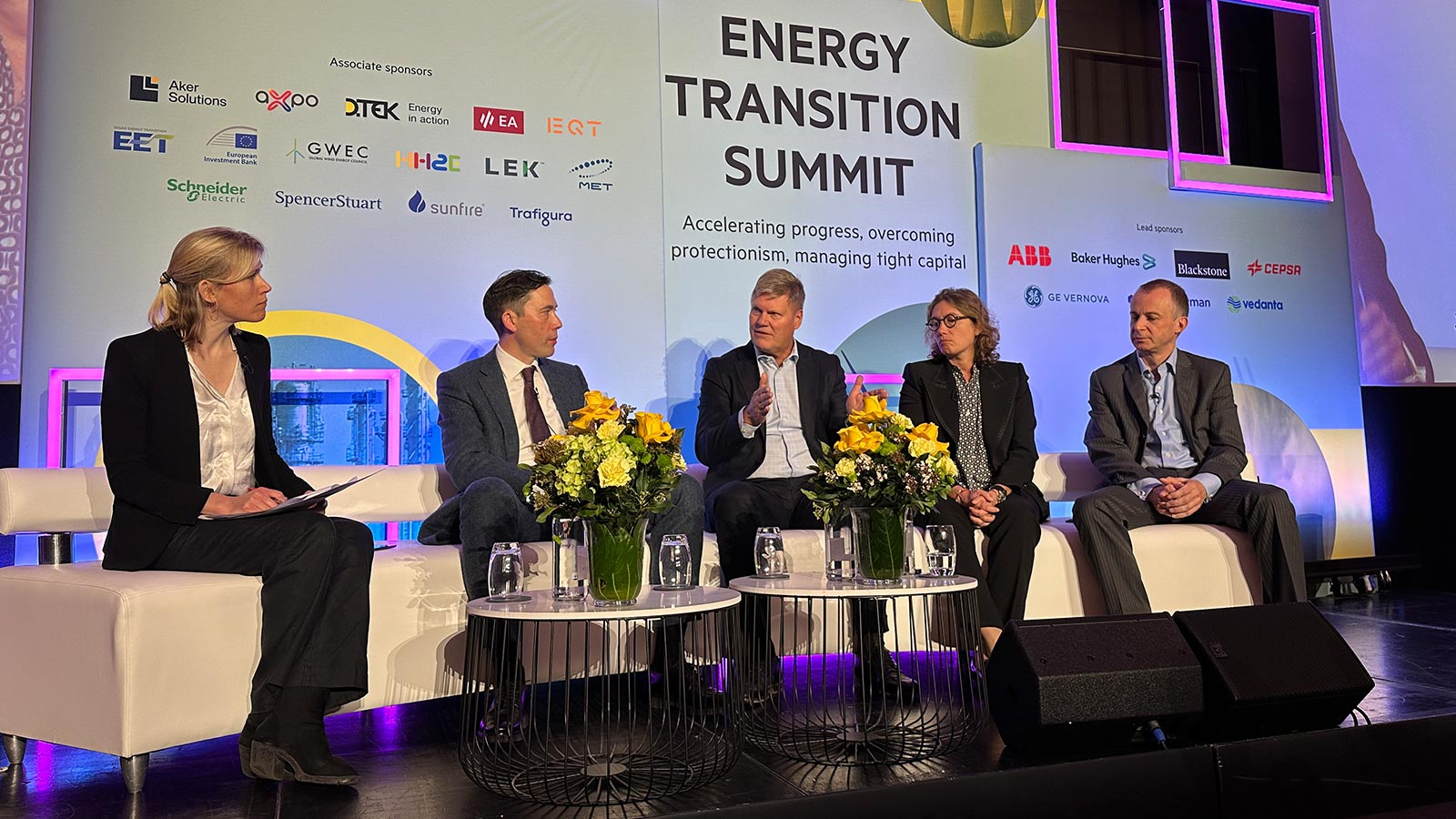By Sarah Coleman
“My barber was asking me about carbon capture recently,” commented Gerry Farrow, Senior Vice President of Aker Solutions, at the Financial Times Energy Transition Summit held in London, England in November. “I think that tells you there is general societal interest now.”
And he’s right.
But while there has been a lot of talk about energy transition, and carbon capture and storage (CCS) in particular, most people won’t see it. And anything that is invisible runs the risk of sounding like a myth.
Yet wildfires burning in Canada, receding glaciers, and a rising global temperature are all sounding the alarm that we are in a global climate crisis and in need of a solution.
Carbon reduction is the answer. While other green technologies look to scale, CCS is the major step necessary to lower the carbon footprint in the energy industry. Technology is in place. Companies are on board. So, what’s the hold up?
- Partnership and collaboration are needed between energy organizations, without competition.
- Policy is required across the globe for producers and exporters.
- The speed of CCS rollouts must accelerate through the removal of hurdles at the regulatory and government level.
Partnership and collaboration are needed between energy organizations, without competition
In a panel discussion on the growth of CCS, energy leaders discussed how to move into a space of action.
“We shouldn’t underestimate the importance of collaboration around [CCS] projects,” said Gustavo Baquero, EVP, Strategy, Business Development and Energy Transition at Harbour Energy. “They’re massive, and you need many stakeholders to make them happen.”
And he should know. Harbour Energy, in partnership with bp, is leading the Viking CCS project, the development of a CO2 transport and storage network located in the Humber, the United Kingdom’s most industrialized region. With its members, Viking CCS has created an end-to-end solution across the three stages of CCS – capture, transportation, and storage. Construction is slated to begin in 2025 (pending decision by Secretary of State), and once up and running, the organization projects more than 50% of Humber emissions could be captured, transported, and stored.
Business partnerships are instrumental in the collaborative planning and development of CCS infrastructure, including CO2 transportation pipelines and storage sites because collaboration allows for the optimization of resources and creates a more integrated and effective system for capturing and storing CO2 emissions.
The best ecosystems for CCS require geology, reservoirs, and industry to repurpose infrastructure, added Baquero.

During the Summit, ABB and Computer Modelling Group (CMG) announced a new partnership that aims to develop a new product providing a full source-to-storage solution to support the successful operation of CCS projects.
The oil and gas industry has historically worked in silos with information getting lost between the surface (production) and the subsurface (reservoir). Without a holistic view there is a risk of information gaps, jeopardizing the ability to manage the complete system. The same is true for CCS. There are consequential damages of not being able to see a project end-to-end – financial, regulatory, and environmental.
This new product is tailored specifically to enhance the efficiency and management of the CCS process, ranging from the emitters to the storage reservoirs, encompassing the complete system lifecycle. It will enable real-time monitoring and optimization, operations planning, and provide what-if scenario analysis.
Brandon Spencer, Division President of ABB, spoke about the capture of emissions from fossil fuels and the necessity of storage at the Summit.
“If we can capture 50% of what’s being done with the emissions that are happening… the overall carbon footprint comes down.” He reinforced that we need to leave competitiveness behind. “We have to come back to the middle, together and focus on progress — not I win, you lose, or this technology wins, that technology loses. I think it’s very dangerous to pick winners.”
Policy is required across the globe for producers and exporters
All sessions at the Summit mentioned the Inflation Reduction Act (IRA) introduced in the United States.
Signed into law in 2022, the IRA includes significant federal funding for climate efforts. Nearly $400 billion in federal funding is being directed to clean energy, delivered through a mix of tax incentives, grants, and loan guarantees. And the enhancements to the Internal Revenue Service section 45Q on carbon capture and storage decreased the threshold for captured qualified CO2 and increased the credit amounts.
The world has taken notice of this carrot approach.
“The Inflation Reduction Act is the most historic piece of climate action taken by the U.S. in its history, maybe by any country in history,” said Jason Bordoff, Founding Director of the Center on Global Energy Policy, Columbia University SIPA. “It’s a game changer.”
While the IRA is looked to as a significant step forward in combating carbon emissions, there is agreement that significant work still needs to be done.
“There’s no one-size-fits-all [approach],” said Anja Isabel Dotzenrath, EVP, Gas & Low Carbon Energy for bp. The IRA is not an approach that can be applied across the globe due to differing energy production and consumption, geopolitical concerns, investment, and government frameworks.
Currently there are only a handful of countries that have an incentive or penalty program in place to drive carbon emission reductions. A common question among participants and panelists was how progress can be made on CCS initiatives while there are exporters who have no carbon reduction policies in place.
Incentives from the IRA are so strong, for example, that investors are overlooking eastern opportunities for those that can pay. “The Inflation Reduction Act is a fantastic instrument, and this is why we see so much capital leaving Europe and moving into the U.S.,” said Dotzenrath.
A united global effort is required to support emission reductions while attracting capital to fund these expensive projects. And governments can play a crucial role facilitating energy transition through effective regulation and policy measures, subsidies and grants, and carbon pricing.

The speed of CCS rollouts must accelerate through the removal of hurdles at the regulatory and government level
Jason Bordoff of Columbia University had this advice to energy companies: “What we need to do in Europe is really double down and think about how policy can help accelerate the deployment of capital into clean energy in emerging and developing economies.”
Many CCS projects are under the microscope and have significant regulatory hurdles to overcome before development can even begin. The process needs to speed up if we want to achieve net zero goals. To do so, government support is required.
Four focal points emerged at the Summit as it relates to increasing speed of CCS rollouts:
Clear Regulatory Standards: Clear and consistent regulatory standards for CCS projects are required. This clarity will help investors and industry players navigate the regulatory landscape.
Streamlined Permitting Processes: A simplified and expedited permitting process for CCS projects to reduce bureaucratic delays and uncertainties is necessary to make it easier for projects to move forward and meet climate targets and deadlines.
Cluster Development: Encourage the development of CCS clusters where multiple emitters can share infrastructure, making the technology more economically viable. (Both Europe and North America are undertaking these projects.)
Workforce Training: The skills possessed by energy employees, from front line workers to engineers, are required for energy transition projects. Companies should invest in training programs to continue to develop these skills to create a workforce capable of designing, implementing, and maintaining CCS projects.
With COP28 wrapping mid-December, climate change and emission reductions was at the forefront, with oil and gas organizations feeling the pressure for action. Under the spotlight of the need to move forward, above all else, panelists, speakers, and attendees at the Financial Times Energy Transition Summit agreed – energy transition needs to accelerate. While there is an increasing call for renewables and alternative energy sources to fossil fuels, it’s clear that carbon capture is the low-hanging fruit that can make real headway in the climate crisis, globally.
Sign up to receive newsletter updates from Accelerate on LinkedIn.







